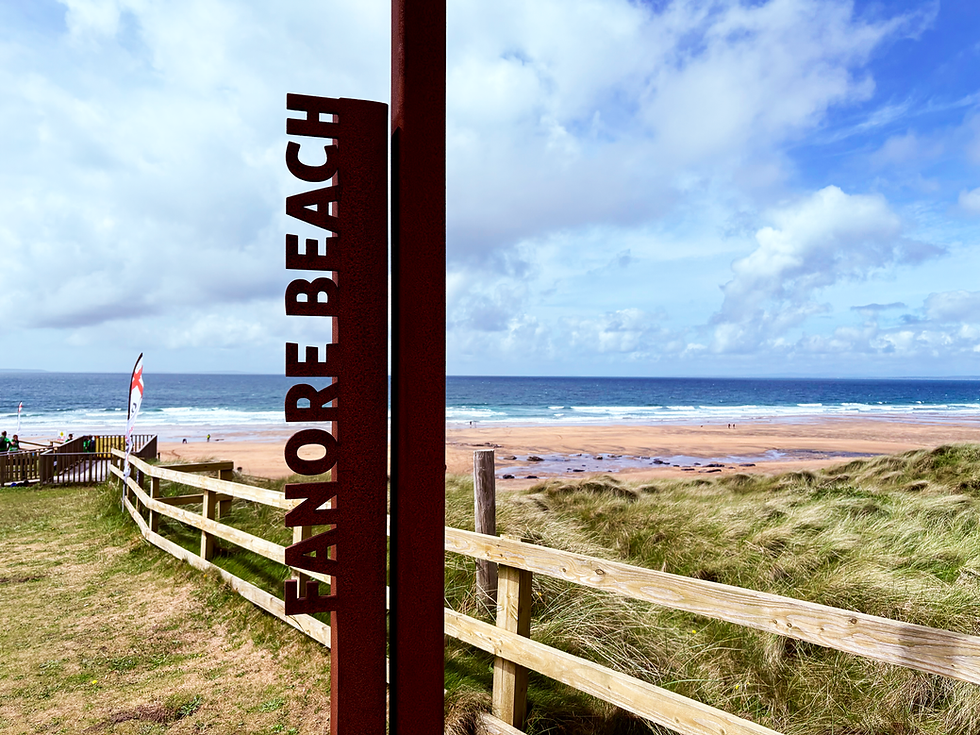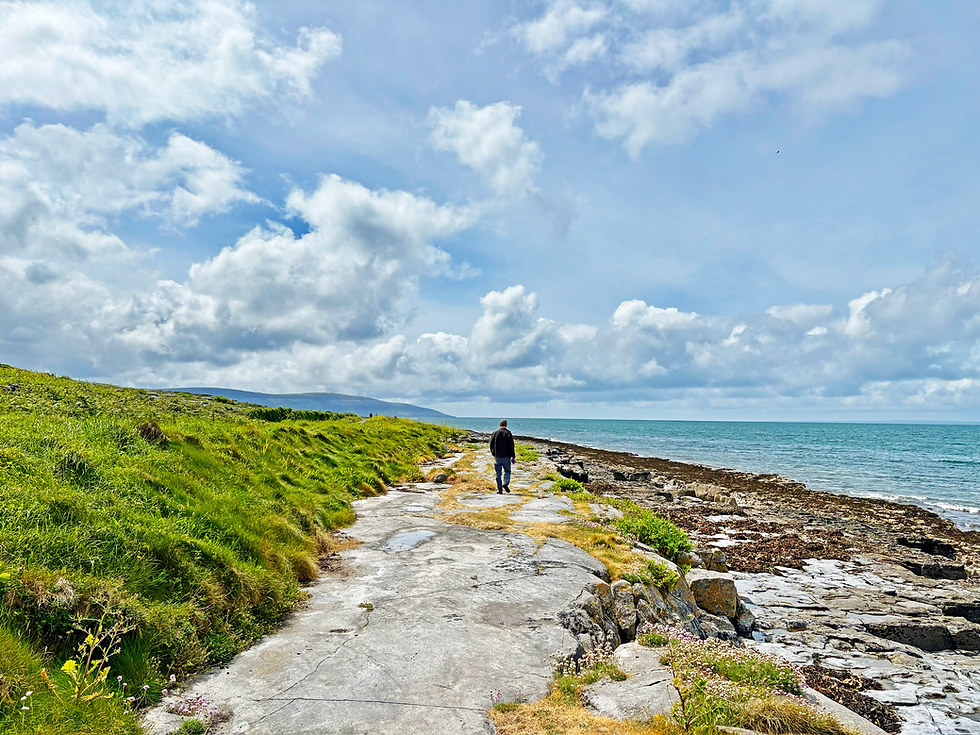Golden dunes and stony mountains at Fanore Beach
- Warren Berger

- Jun 23
- 3 min read
Updated: Oct 18

One of the best days I had in the Burren during my recent trip was spent in and around the small village of Fanore (which means “golden ring”). Located in the northwestern-most strip of the Burren along the Atlantic coast, Fanore is long and narrow—really just one main road, with the ocean on one side and limestone hills and mountains on the other. Whether you head left to the beach or right to the mountains, you can’t go wrong.
I turned to the beach, where the parking area was empty at mid-morning on a sunny and warm day in late May. I climbed down a set of steps from the parking lot and as Fanore Beach came into view, the town’s name made sense: it’s a long, curved shoreline with golden sand.
The gold is particularly striking because it is set against shiny black stone along the edge of the shore. I was surprised to learn that this is limestone, which is usually a light gray but blackens when wet. In some areas, the flat black stone forms a shimmering carpet runway between the sand and the water.

As you walk along the shore with the ocean on your left, to the right there is a network of sand dunes, with grassy stalks rustling in the breeze and trails running throughout. These dunes started forming over 5,000 years ago and archaeologists have found evidence of people living in them back then; these days they’re inhabited mostly by rabbits. I walked up and down the dune trails, catching different angled glimpses of the beach or the mountains as I came around each bend.
The dune trails led me to a little valley, still close to the water, that was populated with a family of erratic boulders. I say “family” because the rocks, though in various shapes and sizes, seemed related somehow, and the way they were clustered (a couple of big ones alongside a group of smaller ones) made me think of parents standing watch over the kids. (Note to Marvel Comics: How about a new superhero group known as “The Erratics,” made of ancient limestone come to life? Just a thought.)
You can easily spend two or three hours walking Fanore Beach and its dunes, as I did. But if you’re ready to head inland and up into the hills, there’s a great walk, called the Caher Valley Loop, that begins at the Fanore Beach parking area. It takes about three hours. From the car park, you follow a quiet country road, which leads to the glistening Caher River; then you ascend a green lane up the mountain. At the top, there’s a sweeping view of the Aran Islands and Galway Bay. Eventually, the trail winds back down to the beach and your car.
From sand to stone
Leaving Fanore Beach (I could have stayed all day), I drove a bit further up the coast, still in Fanore, and came upon a turnout in the road, overlooking a limestone coastal geopark site known as Murrooghtoohy. I got out of the car, stepped over a low stone wall, and descended toward the ocean.
This was a very different kind of shoreline—no more sand, now all stone, and elevated above the water enough that the limestone was dry and light gray in the sun. I’d heard that limestone retains warmth yet doesn’t get too hot—I decided to test this out by taking off my shoes and socks and walking barefoot on flat stones. I’m a notorious tenderfoot, but it felt great and I walked so far that I lost sight of my shoes but I didn’t care. As I walked, I stopped periodically and crouched down to take a closer look at plants and flowers growing in the cracks in the limestone.

Shoes back on, I returned to my car and drove a bit further up the coast and soon I saw the Black Head lighthouse on my left and Black Head mountain on my right. I had a déjà vu moment—a year earlier on my previous trip to the Burren, I’d parked at that lighthouse and gotten lost on that mountain (more on that in my post Getting lost and finding an idea.)
Now I slowed the car and thought about re-enacting that original adventure, but then figured I’d better not. It was growing late in the day and I had planned to take this road all the way to the spot known as the Flaggy Shore. I would need at least a few hours to walk that shore; there was no daylight to waste.
This was a good choice, because the Flaggy Shore turned out to be one of the most inspiring walks I’ve ever had. Read why.












Comments